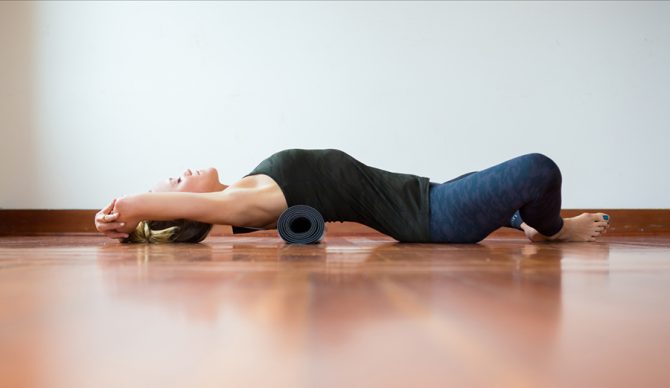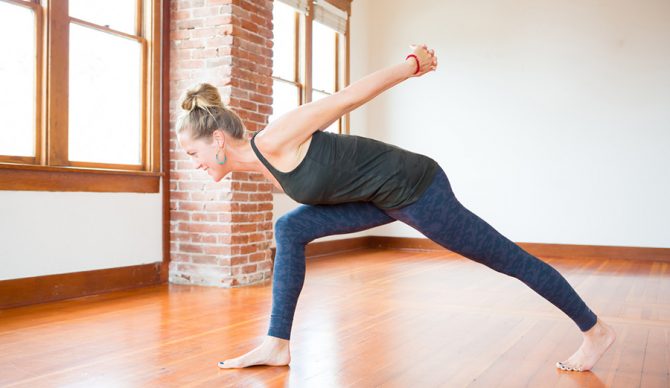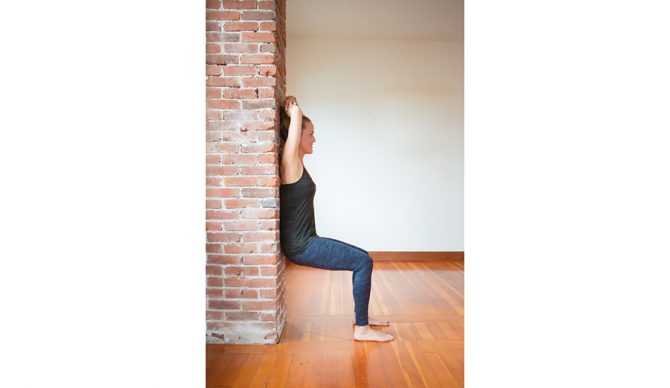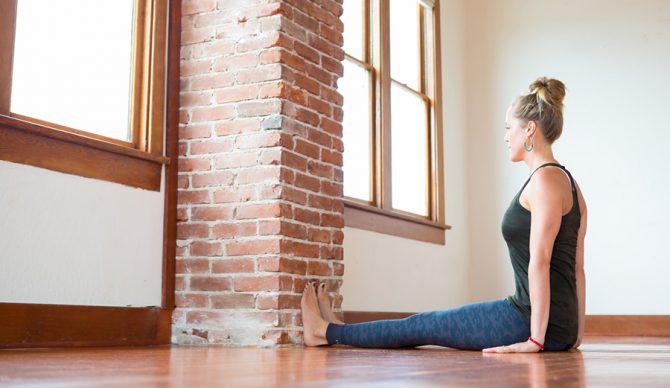
Photo: @micaelamalmi_photography
How often do you look down at your beloved phone? Perhaps you are doing just that right now. A study showed that, on average, people look at their phone every six and a half minutes. That’s around 150 times a day. Yikes. Also, how long do you get caught looking down in the scrolling game? On average, a person gazes down at their phone for two to four hours a day. That’s close to 700-1400 hours a year. Yikes again! Not only is the repeated motion of cervical flexion/looking down wreaking havoc on your delicate spine, so is the amount of time you spend staring downward. Also a phone pinned between your ear and shoulder while you chat is just wrong (use earphones). As much as we love our devices they are literally a pain in the neck. Unfortunately, neck pain is on the rise and due to its popularity, it even has a name: Tech Neck or Text Neck.
What exactly is happening?
As you look down at your device, the head moves forward and your center of gravity automatically follows, shifting forward as well. To compensate, the upper body/thoracic spine rounds and curves backwards, creating excessive kyphosis (aka a hunched appearance). To compensate for that, the hips then shift forward and the lower back curvature is compromised. A domino effect is created throughout the whole body responding to the slight shift in the head leaning forward. To top it off, your breath is compromised because your diaphragm, the main muscle of respiration is compressed as you slouch. Go ahead, slouch (just this once!) and try to take a full cycle of breath. Kinda challenging? Now sit up straight and take a deep breath. So much better, right? The diaphragm is free to move, expand and contract for sufficient movement and supply of oxygen, which equals a happy body and happy mind.
Why does this matter?
As a result of this domino effect, misalignments may occur throughout the entire body, leading to pain and lack of range of motion in the neck as well as the middle and lower back, shoulders, hips and even jaw. Over time these compensatory patterns are seriously detrimental. Let’s analyze this further:
When the spine is in neutral position, the head weighs 10-12 pounds. If the head shifts forward 15 degrees, it’s now 27 pounds, at 45 degrees its 49 pounds, at 60 degrees, the head is now 60 pounds. You might as well wear a watermelon around your neck. The extra weight adds unrelenting and unforgiving stress at the cervical spine, the intervertebral discs, and the muscles and nerves involved because its only meant to support a dozen pounds. There are clusters of nerves that could be pinched, causing tingling down the arm. Also, fatigue sneaks in even quicker despite how “good” it feels to slouch. Your body is working overtime to hold you out of alignment, so you actually feel exhausted faster. Also, without proper oxygen consumption and shorter breaths your body is physiologically stressed. But read on before you start to panic.
What you can do:
Thank goodness our bodies are miraculous machines and will do whatever we train it to do, but it does take work and effort to break some of those good old pesky habits. It is possible to relieve current and possible future neck pain without giving up your devices. Phew! These subtle changes and tips below have a huge impact. Rehearse them like you are studying for a role in a play, and then practice some more. The more you practice, the more your body regulates to it’s correct position.
Tips below:
1. Practice AWARENESS, which is one of my favorite words!. I even named my business after it. Notice when you are slouching, maintain a constant flow of attention to arrange your skeleton for better posture so the muscles intelligently coordinate and hold your structure in place. Having normal curves of the spine allows for proper nerve function and for the muscles to engage optimally. We are responsible for arranging our bones, engaging our muscles and supporting ourselves. And like a lot of things in life, it takes conscious effort and awareness.
2. Take breaks. Get up and move. Set an alarm if you have to and there are even watches that vibrate when you have been sitting too long to remind you to get up and move around. My favorite tip is to drink a lot of water so you have to get up and move to take a bathroom break. Drinking water AND moving around, double bonus!
3. Look up! Keep scrolling but lift your device higher or even prop your elbows on a table/desk as you hold up your phone.
4. Four yoga poses to do below, daily.
5. If you are experiencing pain that is constant, radiating down the arm or is waking you at night, see your MD/Chiro/Physical Therapist.
Happy scrolling but remember to look up, enjoy the view and the yoga sequence below to keep your neck, your body and your mind healthy.
With love and light,
Amanda
Sequence:
Hold each pose for a minute and take deep breaths, notice if you are holding tension in your neck or in the muscles around the jaw, relax those areas.
1.Humble Warrior / Open across your chest

Photo: @micaelamalmi_photography
Keep your elbows as straight as possible to stretch the pecs and lean forward while in a lunge position. Be mindful not to rest the torso on the front thigh but rather keep the core engaged and back leg super strong.
2. Wall Squat with Arms in a Frame Overhead.

Photo: @micaelamalmi_photography
Draw your ribs inward and navel toward the spine so it is against the wall if possible. Lengthen upwards through the torso, and release the shoulders away from your ears even though the arms are over your head. The back of the head does not need to be touching the wall.
3. Dandasana | Staff Pose

Photo: @micaelamalmi_photography
Legs are as straight as possible, feet press into the wall. Press your hands firmly into the ground to emphasize a lengthened spine.
4. Heart Opener

Photo: @micaelamalmi_photography
I LOVE this one! Relax across a rolled mat at the bottom tips of your shoulder blades. Place your arms out to the side with the palms facing upwards or in a frame overhead like at the wall in #2. If you experience any tingling in the arms or hands, lower the arms closer to your sides.
Breathe.
Relax.
Enjoy.

